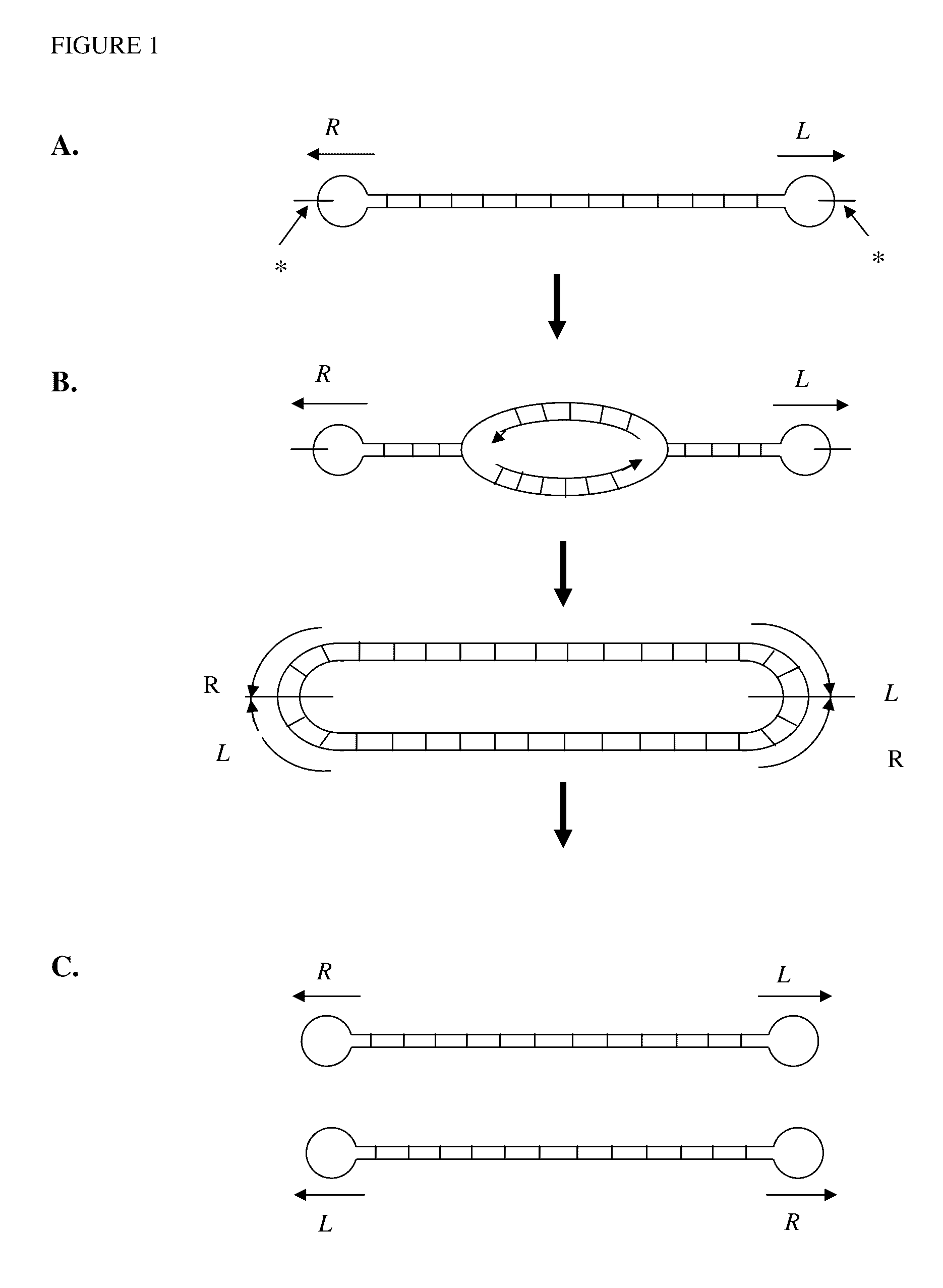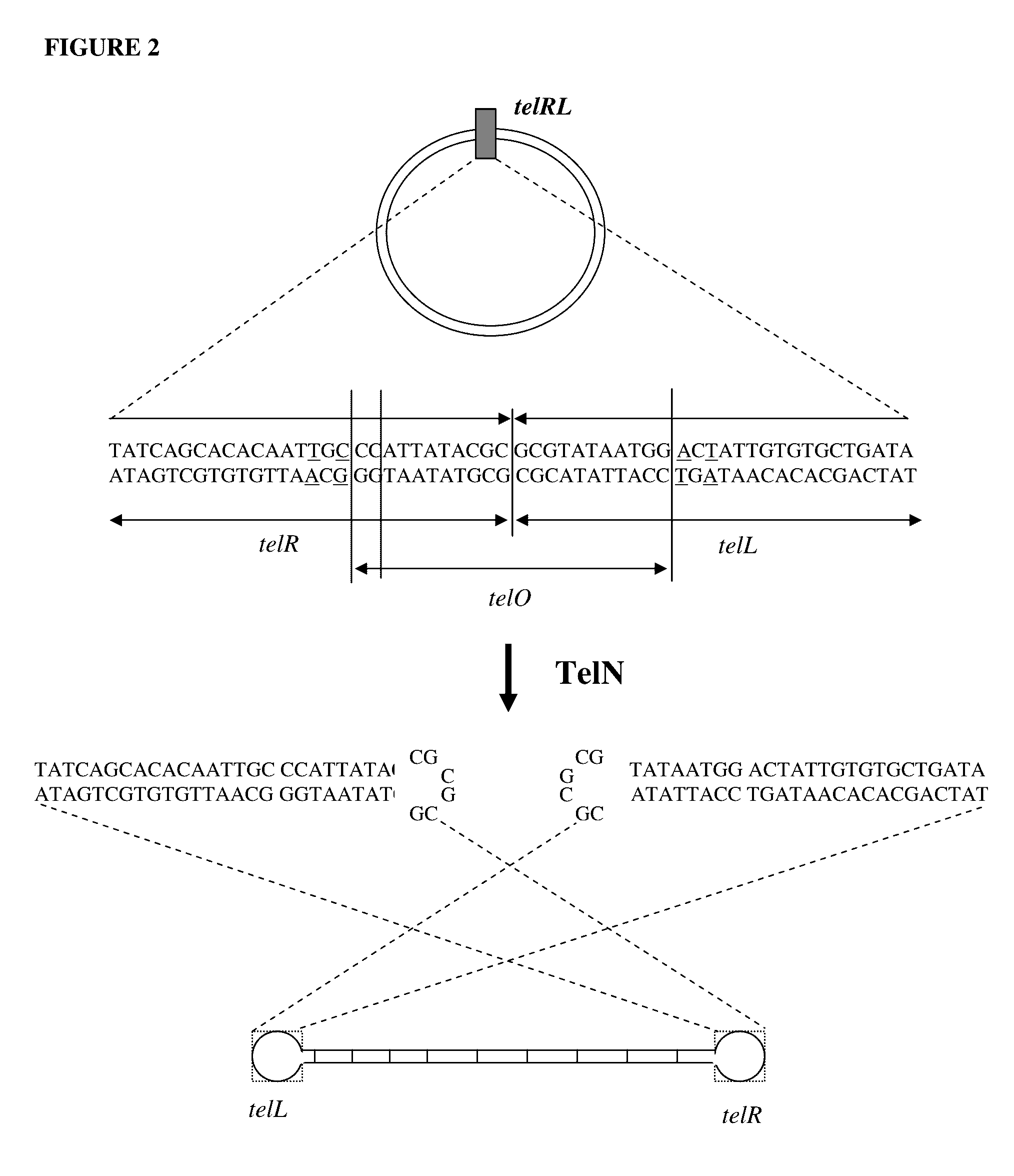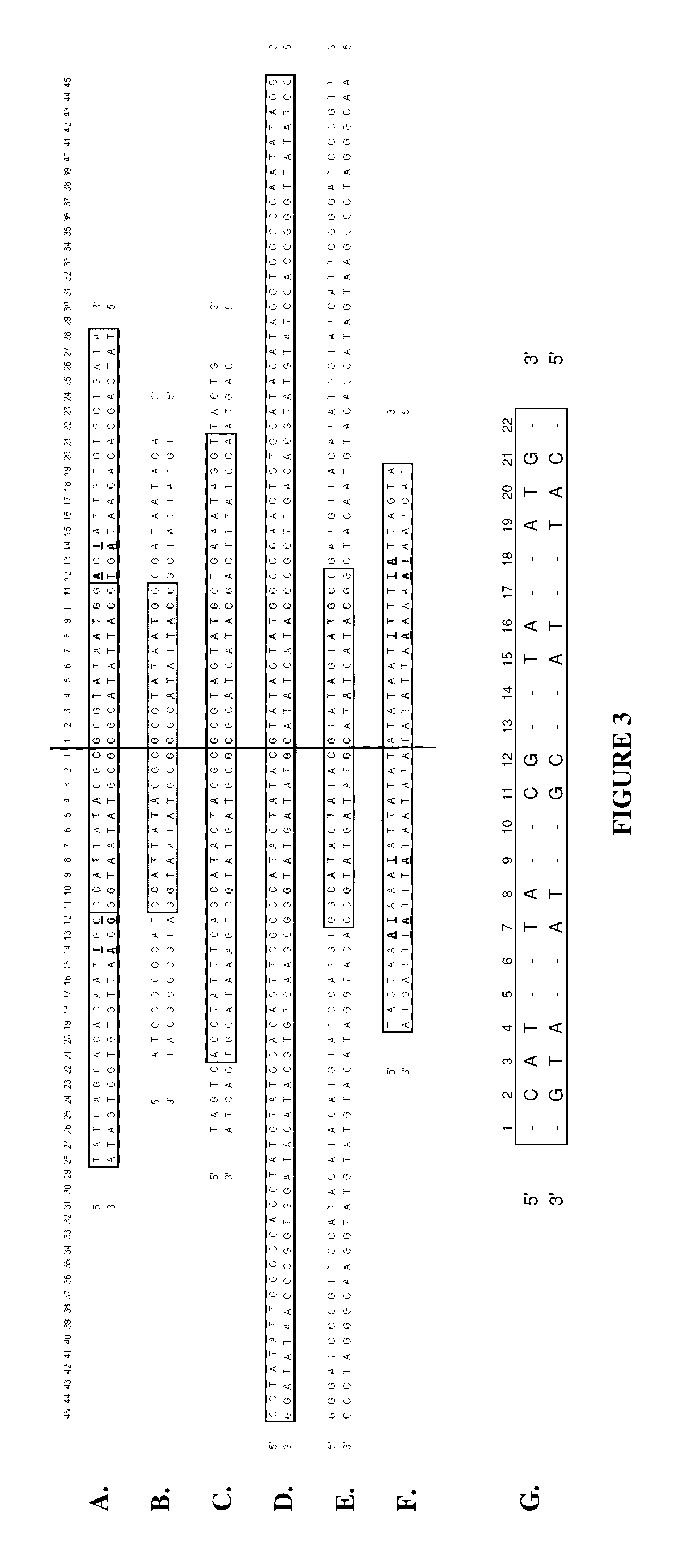Production of closed linear DNA using a palindromic sequence
a production method and dna technology, applied in the field of palindromic primers, can solve the problems of difficult control of the quality and yield of the desired dna product, the difficulty of fidelity of the amplification process, and the cost of traditional cell-based processes for amplification of dna in large quantities
- Summary
- Abstract
- Description
- Claims
- Application Information
AI Technical Summary
Benefits of technology
Problems solved by technology
Method used
Image
Examples
example 1
Production of Closed Linear DNA from a Double Stranded Circular DNA Template
[0196]Double stranded circular DNA containing a protelomerase TelN binding sequence is used as the DNA template. A single palindromic oligonucleotide complementary to a section of one half of the palindromic sequence that comprises the protelomerase TelN binding site is used to specifically prime both strands. Examples of suitable primers include SEQ ID NOS. 30 to 35. Denaturation of the double stranded circular template and the annealing of the single primer is carried out in an annealing / denaturation buffer containing, for example, 30 mM Tris-HCl pH 7.5, 20 mM KCl, 2.5 mM MgCl2. Denaturation is carried out by heating to 95° C. and maintaining at this temperature for 1 to 10 minutes followed by a carefully controlled cooling profile optimised for the maximum binding of the specific primer to the template. The temperature is then reduced to the optimum for DNA amplification by a suitable DNA polymerase. A su...
example 2
Production of Closed Linear DNA from a Closed Linear DNA Template
[0199]Closed linear DNA containing telomeric ends comprising the binding sequence of a protelomerase TelN is used as the DNA template. A single palindromic oligonucleotide complementary to a section of one half of the palindromic sequence that comprises the telomeric ends of the template is used as a specific primer. The primer binds to two identical sites on the DNA template. Examples of suitable primers include SEQ ID NOS. 30 to 35.
[0200]Denaturation of the closed linear DNA template and the annealing of the single primer is carried out in an annealing / denaturation buffer containing, for example, 30 mM Tris-HCl pH 7.5, 20 mM KCl, 2.5 mM MgCl2. Denaturation is carried out by heating to 95° C. for 1 min and maintaining at this temperature for 1 to 10 minutes followed by a carefully controlled cooling profile optimised for the maximum binding of the specific primer to the template. The temperature is then reduced to the...
examples 3 and 4
Materials and Methods
Conditions for DNA Amplification
[0204]4.3 kb circular double stranded DNA containing a protelomerase TelN binding sequence and a HindIII restriction endonuclease site was used as the DNA template. The TelN binding sequence constitutes an inverted palindrome. Oligonucleotides of different lengths complementary to sequences on one half of the palindromic TelN binding site were used as single specific primers. Such primers bind to identical sites on opposing strands within the TelN sequence of the DNA template and initiate DNA synthesis in opposite directions. Thus, only a single oligonucleotide is required to prime each strand. Examples of primers tested are selected from SEQ ID NOS. 30 to 42.
[0205]Denaturation of the circular double stranded DNA template and the initial annealing of the single primer were carried out in a buffer containing 1 ng DNA template, 30 mM Tris-HCl pH 7.5, 30 mM KCl and 15 mM MgCl2 in a volume of 50 μl. The concentration of single primer ...
PUM
| Property | Measurement | Unit |
|---|---|---|
| Tm | aaaaa | aaaaa |
| Tm | aaaaa | aaaaa |
| Tm | aaaaa | aaaaa |
Abstract
Description
Claims
Application Information
 Login to View More
Login to View More - R&D
- Intellectual Property
- Life Sciences
- Materials
- Tech Scout
- Unparalleled Data Quality
- Higher Quality Content
- 60% Fewer Hallucinations
Browse by: Latest US Patents, China's latest patents, Technical Efficacy Thesaurus, Application Domain, Technology Topic, Popular Technical Reports.
© 2025 PatSnap. All rights reserved.Legal|Privacy policy|Modern Slavery Act Transparency Statement|Sitemap|About US| Contact US: help@patsnap.com



